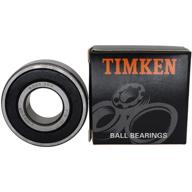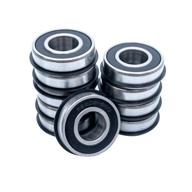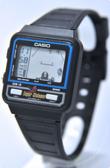
Review on 💫 Enhanced Precision: Actuator Sfu1605 Stepper Beauty Star for Optimal Performance by Mark Kolipano

Ideal for moving large loads at low speeds!
I bought this for my master's thesis and needed to be able to move the top of a hospital bed in X and Y directions. It's basically very similar to the XY tables commonly found in 3D printers these days, but I needed something strong enough to move the patient. After much searching, I quickly found that most reputable actuator companies deal in small, precision gears, and while there are some more industrial table options, they can cost thousands of dollars. I've also tried putting together my own build by purchasing stepper motors and ballscrews separately, but nothing I could find was within my budget. I couldn't find any details on this Twowin MyCNC stepper motor build but given the cheap price of the complete kit I thought it was worth a try. As with any stepper motor, a power supply and driver are required to control the movement. I originally bought Witbot CNC Shield V3.0 + UNO R3 Expansion Board for Arduino + drv8825 stepper motor driver with Arduino heatsink kits as drivers as I needed the Arduino board anyway. Upon further review, I found that while this is a great option for small setups, it won't be able to provide the current I need in my situation as these steppers can draw up to 3A the kit came with delivered with a real Arduino Uno board at a reasonable price. I then checked out the Adafruit Motor/Stepper/Servo Shield for Arduino v2.3 Kit as it could handle a higher current, but it was only capable of driving two stepper motors and I wanted to keep the option of using a third for that Add Arduino. Direction Z. After some research (I should have done it first), I found that MYSWEETY TB6600 4A 9-42V CNC Stepper Motor Driver, Nema tb6600 Single Axis Hybrid Stepper Motor for CNC Stepper Motor Driver was the right choice. You have to buy a driver for each stepper motor, but this allows me to get the current I need without overheating the electronics. The tb6600 drivers also allowed for current limiting (I think I limited it to 1A) and microstepping. I bought MENZO 24V 15A DC 360W universal adjustable switching power supply for video surveillance, radio, computer project, LED strip for power supply. I've used it to power my drivers as well as a StarTech.com 4-Port Mountable Ruggedized Industrial USB Hub (ST4200USBM), which I used to combine all USB ports into one. I cut off one end of the extension cord to provide 120VAC power. I then bought a trailer wiring kit from a big store and used it along with the URBEST5 piece 2 row 600V 25A terminal block to connect the drivers to the stepper motors. I used an Arduino Uno board to provide pulse and direction signals to the drivers. Another problem I had to solve was how to attach one of these assemblies to another to get the XY table needed. After several attempts I used a piece of aluminum U-profile to make brackets. As other reviewers have pointed out, there are square nuts that slide into slots on the top of the slide plate as well as along the bottom of the rail. I measured and drilled holes in the brackets to bring the assemblies together. Then I bought some M4 and M6 screws and lock washers and put them together. I have attached some photos for this. There might be a better way to do this, but this was the best I could think of. I've also attached a video of the slider movement as well as a picture of the complete assembly in my project. Also, I found the following helpful for additional specifications. Stepper motors conform to NEMA23, which is basically a size designation. These are 3A 24VDC motors. Without microstepping, it takes 200 steps or pulses to complete one revolution. The screw is 1605, which means the shaft is 16mm in diameter and has a stroke of 5mm per revolution. If it takes 200 steps to complete one revolution and 5mm is traveled in one revolution, then it takes 40 steps to move 1mm. I used this in my programming to convert the distance I had to travel into pulses that I sent to the stepper motor. It was very accurate and certainly reproducible. If you're trying to decide between simple DC motors, servos, or stepper motors for your application, this will help you understand how both work. Control of a standard DC motor is achieved either by varying the applied voltage or by applying power pulses to the motor and changing the pulse length. Servo motors typically consist of three wires: power, ground, and control. A servomotor positions itself by modulating a positive signal to determine position, not speed like a standard motor. Current is supplied to the motor until the position of the motor, received by the encoder mounted on the shaft, equals the control signal. Each servo motor has a neutral pulse value. That is, if the pulse length is equal to the neutral value, the motor will not move even if forces are applied to it. A longer pulse duration rotates the shaft clockwise, a shorter one counterclockwise. The servo stays in place until a new position signal is sent. Servo motors are great when high torque at high speed is required. Stepper motors consist of multiple sets of poles, typically 50-100. The pole is the point in the motor where the magnetic north and south poles are located, created either by a permanent magnet or by current flowing through a winding. Rotation is achieved by only energizing one set of these rods at a time. When power is applied, the shaft rotates to that position and stops. The next pole is energized and the shaft rotates to that position. This process is repeated for the number of pulses sent to the motor. Since the position is controlled by the number of pulses and not feedback, no external devices are required and the process is kept open loop. Stepper motors are great when you need high torque at low RPM. They also offer the benefit of maintaining their position when power is removed.
- Pleasant to use
- alt
New products
Comments (0)
Top products in 🔧 Linear Motion Products

Iverntech MGN12 400Mm Linear Rail Guide Upgrade For Ender 3, Corexy, Tronxy, Delta Kossel 3D Printers And CNC Machines With Stainless Steel Carriage Block

12 Review
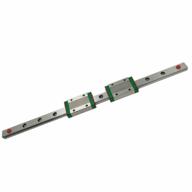
Iverntech MGN12H Linear Rail Guide With Stainless Steel Carriage Blocks - 700Mm Length For 3D Printer And CNC Machine

9 Review
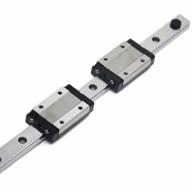
Iverntech 400Mm MGN12 Linear Rail Guide With 2 Black Stainless Steel MGN12H Carriage Blocks For CNC Parts And 3D Printer Upgrades

8 Review

Goodyear Ultra Grip Ice SUV 235/65 R17 108T winter

35 Review


